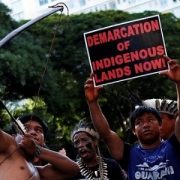中国人
Nomen omen, the name is destiny, and few modern countries believe it as much as China, where 名就是命.
In the late 19th century, at the end of the empire, crusader Liang Qichao famously lamented that “our greatest shame is that our country has no name. The names that people ordinarily think of, such as Xia, Han, or Tang, are all the titles of bygone dynasties.” He argued that the other countries of the world “all boast of their own state names, such as England and France, the only exception being the Central States.”[1] Liang had recently botched his attempt to reform the dying empire and was ruminating on the deep reasons for his and his country’s failings.
True enough, there is a crowd of names for the country[2]. We have Zhongguo (中国, “central state/states”), Zhonghua (中华, “central beauty”), Huaxia (华夏, “beautiful grandness”), Shenzhou (神州, “divine state”), and Jiuzhou (九州, “nine states”). Han (汉, from the Han dynasty, 202 BC–9 AD and 25–220 AD) and Tang (唐, from the Tang dynasty, 618–907). There is Tianchao (天朝, “the heavenly court”), Tianxia (天下, “all under heaven”), and Sihai (四海, “within the four seas”). Each has its history and specific meaning, which are not totally overlapping. Then too many names, too many meanings, is equal to no name, no meaning.
Plus, there is a common name used by foreigners: China.
The word came from the Sanskrit word “चीन (Cheen), and then it went into Persian and ancient Greek as θίν (Thin). Most scholars believe it came from the old state of Qin. The 8th century Tang dynasty called the Roman Empire Da Qin (大秦 Great Qin), indicating that they were aware their country’s name abroad came from Qin. Here is the early rub. The ruling Tang dynasty wanted to impose its name as a political statement on a country they knew was called differently abroad.
The Romans called it Seres, the land of silk; in the Middle Ages, it was Cathay, from the name of the then-ruling Mongol empire Khitan. The foreigners accepted the political definition of the empire of the time. The word China returned with the first Portuguese mariners who possibly picked it again from India in the 16th century. The name stuck abroad, perhaps because foreigners needed to identify a place with the same name despite dynastic changes. A few decades after getting in touch with the Europeans, the country actually went from Da Ming Guo (the Great Ming kingdom) to Da Qing Guo (the Great Qing kingdom).
PRC or China?
Each different name marked a solid political statement: the rule of a specific dynasty that had replaced a previous rotten one. Changing names was fundamental because it justified the invasion, coup, or revolution to bring the new elite to power, toppling the previous one. But each dynasty broke history and, thus, the continuity of territorial and political claims.
Those historical breaks didn’t matter in the past. The ruling dynasty took control of the river basins, and the surrounding areas were too weak to mount any significant challenge to the central power’s wishes or intentions.
But after the fall of 1911 of the Manchu Qing Dynasty, the Republic of China (ROC) and even its successor, the communist People’s Republic of China (PRC), were too weak to simply impose their territorial wishes abroad. Therefore, the PRC had to try to grapple with the issue of names and legacy in a territory they had inherited from the Manchus and where over half of it was the ancestral home of peoples ethnically different from the majority of the PRC population.
History and name had to align to try to justify the territory. Historical continuity is a problem when the country changes names each couple of centuries, and because we have different names insisting on similar, overlapping domains or with a similar core land, the plains around the Yellow and Yangzi Rivers. This is particularly true when your power is no longer such in order to impose your vision of history and yourself to the world. In fact, the world works differently than ever in the past Chinese past, creating friction between alternative narratives.
Here is a problem within a problem. Not only does the country have no name, but also the people are nameless. The “Chinese” call themselves huaren 华人, tangren 唐人, hanren 汉人, or zhongguoren 中国人. Again, each word has its history and no totally overlapping meaning. Plus, domestically, thanks to Russian advice in the 1950s, the PRC identified 55 national minorities, of which three (the Mongols, the Uyghurs, and the Tibetans) sat on half of the national territory. Possibly, it was an early design to weaken in its infancy the PRC and forestall the strong nationalist sentiments coming from the ROC, whose government moved to Taiwan.
Meanwhile, ethnic Chinese lived on Taiwan’s de facto independent island and were conspicuous minorities in many Southeast Asian countries and the US. The PRC didn’t want to give up on the claim to Taiwan, wanted to reach out to foreign “Chinese” huaren, and also had to hold onto PRC citizens such as Mongols, Uyghurs, and Tibetans who were not huaren. So, the PRC is confronted with a series of interlocking political and logical paradoxes.
If it stresses the transnational huaren connection, it loses its ethnic minorities, and vice versa. Of course, foreign huaren are an enormous political force and the dominant ethnic group of the PRC; therefore, the weight of other minorities needs to be trimmed down. But this can generate new underlying problems of excessive nationalism and possible racism against internal or external non-huaren.
Romanizing China
It is a very different landscape from Western history. The Greeks had, similar to China, many names for themselves. They were Graeci, Hellenes, Danai, or Argives, and there were the Ionians, Aeolians, and Dorians, all with different meanings reflecting the perceived differences of a people deeply divided. It was unlike the tradition hailing from the Roman Empire. Here we have the opposite of “China.” The Americans, the British, the Russians, the Ottomans, and everything that stood between them all claimed a Roman legacy.
The American symbol, the eagle, comes from the Roman tradition, and so does the Washington city plan with its obelisk and the definition of the US, e pluribus unum (from many one). With the British, Gibbon’s history of Rome and classical education in its schools was set to remold and revamp ancient Roman imperial ambitions. Russia saw Moscow as the third Rome; its two-headed eagle symbolized Constantinople, and its ruler was Caesar, the Czar (Kaiser in German). The Ottomans were no different. After conquering Constantinople, the sultan took the title of emperor of the Romans, claiming to be the true heir of that tradition and turning the oriental Roman cathedral of Hagia Sophia into a mosque.
In the West, very broadly defined from the US to Russia, to the Turkish Empire, and whatever was between them, we have one name, Rome. It was applied for very different historical periods and states stretching over foreign lands, mostly not overlapping.
While the origins of the different names for China are complicated, it’s all very straightforward for Rome. The city took the name from its initiator Romus, who, as its founder, became Romulus, while the place became Roma. Then anybody and any place can also become heir to the Roman tradition—why not China?
China has the opposite daunting problem. It has to reconcile and realign present politics with its past and current borders and present people with the history of different dynasties, boasting other names, foreign politics, and not entirely identical boundaries.
Plus, there is the shifting problem of identity. The hanren were second-class citizens under the Mongols and Manchus; ethnic identity was perhaps milder with the ruling semi-Turkic Tang dynasty.
It all leaves the country and its people with permanent schizophrenia. The place is something inside and something outside. From the outside, there is one name (China). From the inside, it has many names (Zhongguo, Zhonghua, Tianxia, et cetera). From the inside, one looks outside and claims to be one thing for that name (China); from the outside, one can see many things for those many names (Zhongguo, Zhonghua, Tianxia, et cetera).
The brutal shortcut for this would be what Liang Qichao saw a century ago: Adopt the name China/Shina from abroad and drive to become some kind of the latest incarnation of Roman history. It wouldn’t be easy. After long deliberation, even past-century revolutionaries quit naming their country “China.” But is there any other way, especially in the present international situation and with the actual narrative schizophrenia? The alternative can be a nerve-wracking fight with naming schizophrenia with a very uncertain outcome.
Whatever the thing, the state, it starts its “use” and knowledge with a name—its name as ancient Chinese logic already recognized. As Confucius put it: 名正言顺, with correct names, the communication flows.
[1] Liang quoted in Esherick (2006), p. 235, from Liang Qichao, “Zhongguo shi xulun,” Yinbinshi heji 6:3, and in Lydia He Liu, The Clash of Empires: The Invention of China in Modern World Making (Cambridge, MA: Harvard University Press, 2004), pp. 77–78.
[2] I have to thank Donald Keyser and David D. Yang for the help in researching this article.





